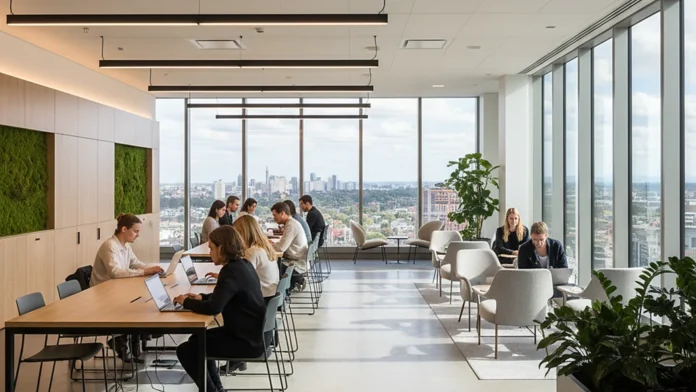Integrating Daylight and Artificial Light for Smarter Building Design
The sophisticated coordination between natural and artificial illumination systems represents a fundamental evolution in contemporary building design. Integrating daylight artificial lighting approaches create environments that optimize energy efficiency while maintaining consistent illumination quality that supports occupant comfort, productivity, and wellbeing throughout varying daily and seasonal conditions.
Understanding Natural Light Dynamics and Seasonal Variations
Natural daylight provides superior color rendering and psychological benefits that artificial lighting systems struggle to replicate, yet its availability varies dramatically throughout daily cycles and seasonal transitions. Successful integration requires comprehensive understanding of site-specific daylight characteristics including solar angles, sky conditions, and seasonal patterns that affect interior illumination quality and quantity.
Daylight analysis tools and computer modeling enable designers to predict natural light availability throughout building spaces while identifying opportunities for optimization through architectural design decisions. These analyses inform both building envelope design and artificial lighting system planning to create integrated solutions that maximize daylight utilization while ensuring consistent performance.
The spectral characteristics of natural daylight change significantly throughout the day, from warm sunrise conditions through cool midday illumination to warm sunset light. Understanding these variations enables artificial lighting systems to complement natural light qualities while maintaining consistent color temperature and illumination character throughout interior spaces.
Architectural Design Strategies for Daylight Optimization
Building orientation and envelope design significantly impact daylight availability and quality within interior spaces. Strategic architectural decisions including window placement, glazing selection, and interior layout optimization can dramatically enhance natural light utilization while reducing artificial lighting requirements and associated energy consumption.
Light shelves, clerestory windows, and skylights provide architectural opportunities to introduce daylight deep into building interiors while maintaining glare control and thermal performance. These features require careful design integration to achieve optimal performance without compromising building envelope integrity or creating unwanted heat gain or loss.
Interior architectural elements including light-colored surfaces, reflective materials, and strategic space planning can enhance daylight distribution while reducing contrast levels that might otherwise require artificial lighting compensation. These passive design strategies provide ongoing benefits throughout building lifecycle while requiring minimal maintenance or operational intervention.
Advanced Daylight Harvesting Technologies
Automated daylight harvesting systems use photosensors and sophisticated controls to continuously adjust artificial lighting levels based on available natural light while maintaining consistent illumination levels for occupant activities. These systems provide significant energy savings while creating interior environments that feel naturally illuminated throughout changing daily conditions.
Photosensor placement and calibration critically affect daylight harvesting system performance, requiring careful consideration of sensor locations, viewing angles, and calibration procedures that ensure accurate response to changing daylight conditions. Poor sensor installation can result in system performance that fails to achieve energy saving objectives while creating uncomfortable lighting conditions for occupants.
Commissioning procedures for daylight harvesting systems must address both quantitative performance metrics and qualitative occupant experience factors that determine system success. Comprehensive commissioning ensures that systems operate as intended while providing comfortable lighting environments that support intended building activities.
Dynamic Glazing and Shading Systems
Electrochromic glazing and automated shading systems provide dynamic control over daylight transmission while maintaining views and architectural transparency. These systems respond to changing solar conditions while optimizing daylight utilization and glare control throughout daily and seasonal variations.
Automated shading systems coordinate with artificial lighting controls to maintain consistent interior illumination while optimizing energy performance through reduced cooling loads and artificial lighting requirements. The integration between shading and lighting systems requires sophisticated control coordination that responds to multiple environmental factors simultaneously.
The selection between different dynamic glazing and shading technologies depends on climate conditions, building orientation, and performance priorities that vary between different projects and applications. Cost-benefit analysis helps determine appropriate technology solutions while considering long-term performance and maintenance requirements.
Artificial Lighting System Coordination
LED lighting systems provide unprecedented flexibility for integration with daylight through color temperature adjustment, dimming capabilities, and zone control that can respond to changing natural light conditions while maintaining desired illumination characteristics. These capabilities enable seamless integration between natural and artificial light sources.
Control system programming for integrated daylight artificial lighting installations must balance energy efficiency objectives with occupant comfort requirements while avoiding lighting changes that might distract from intended building activities. Gradual transitions and appropriate control logic help ensure that automated adjustments enhance rather than compromise user experience.
Emergency lighting and backup illumination systems must coordinate with daylight integration strategies to ensure adequate illumination during power outages while maintaining code compliance requirements. Battery backup systems and emergency lighting design must consider reduced daylight availability during emergency conditions.
Smart Building Integration and IoT Connectivity
Internet of Things sensors and building automation systems enable sophisticated coordination between daylight and artificial lighting while providing data collection capabilities that support ongoing system optimization. These systems learn from usage patterns while adapting to changing conditions automatically.
Occupancy sensors and personal lighting controls enable individual users to customize lighting conditions while maintaining coordination with daylight availability and energy efficiency objectives. These systems balance individual preferences with broader building performance goals while providing user satisfaction and energy savings.
Predictive control algorithms use weather forecasting and building occupancy data to optimize lighting system operation proactively rather than reactively responding to current conditions. These approaches maximize energy savings while ensuring appropriate illumination levels are available when needed.
Glare Control and Visual Comfort Management
Direct sunlight and excessive brightness contrasts can create uncomfortable glare conditions that compromise occupant productivity and satisfaction despite providing beneficial daylight illumination. Effective glare control strategies must balance daylight utilization with visual comfort requirements throughout changing sun angles and seasonal conditions.
Anti-glare strategies including diffusing materials, indirect lighting approaches, and strategic interior design can minimize glare problems while maintaining daylight benefits. These solutions require careful coordination between architectural design, interior design, and lighting system planning to achieve optimal results.
Computer-based glare analysis tools help designers identify potential glare problems during design phases while evaluating alternative solutions that optimize both daylight utilization and visual comfort. These analyses inform design decisions while supporting more comfortable and productive interior environments.
Energy Performance and Economic Benefits
Comprehensive energy analysis of integrated daylight artificial lighting systems demonstrates significant energy savings compared to artificial lighting approaches while quantifying economic benefits that justify system investment. These analyses must consider both direct lighting energy savings and reduced cooling loads from decreased heat generation.
Demand response capabilities enable integrated lighting systems to participate in utility programs that provide additional economic benefits while supporting grid stability during peak demand periods. These programs reward energy conservation while providing ongoing operational cost reductions.
Return on investment calculations for daylight integration must consider both quantifiable energy savings and qualitative benefits including improved occupant satisfaction, productivity enhancement, and potential property value increases. Comprehensive economic analysis supports more informed investment decisions while demonstrating project value.
Health and Wellbeing Impacts
Exposure to natural daylight supports circadian rhythm regulation and psychological wellbeing in ways that artificial lighting cannot fully replicate. Integrating daylight artificial lighting strategies prioritize natural light exposure while ensuring consistent illumination quality that supports both physiological and psychological health.
Seasonal Affective Disorder and other light-related health issues can be addressed through lighting design strategies that maximize natural light exposure while providing supplemental artificial lighting that supports mood regulation and circadian rhythm maintenance during periods of limited daylight availability.
Biophilic design principles recognize human connections to natural systems and processes that can be supported through lighting design approaches that emphasize natural light while creating interior environments that feel connected to outdoor conditions and seasonal changes.
Technology Integration and Future Developments
Emerging technologies including transparent LED displays, organic lighting systems, and advanced optical materials promise new possibilities for daylight and artificial lighting integration while maintaining architectural transparency and design flexibility. These technologies require evaluation for specific applications but may provide unique benefits in appropriate situations.
Artificial intelligence and machine learning applications enable increasingly sophisticated control systems that learn from occupant behavior patterns while optimizing daylight and artificial lighting coordination automatically. These systems promise to improve both energy performance and occupant satisfaction through adaptive operation.
Solar tracking systems and advanced daylighting technologies including fiber optic daylight transmission and hybrid solar lighting systems represent specialized applications that can provide daylight in locations where conventional daylighting approaches are not feasible.
Implementation Strategies and Best Practices
Successful implementation of integrating daylight artificial lighting requires early coordination between architectural design, lighting design, and building systems engineering to ensure that all system components work together effectively throughout building lifecycle. This integrated design approach helps avoid conflicts while optimizing overall system performance.
Mock-up installations and pilot testing enable project teams to verify system performance while refining control strategies and operational procedures before full building implementation. These validation processes help identify and resolve potential issues while demonstrating system capabilities to building owners and operators.
Training and education for building operators ensure that integrated lighting systems achieve intended benefits throughout their operational life while supporting ongoing optimization efforts that can enhance performance over time. Without proper training, even well-designed systems may fail to deliver expected benefits.
The integration of natural and artificial lighting represents one of the most effective strategies for creating high-performance building environments that support both environmental and human objectives. The most successful implementations balance technological sophistication with practical considerations while maintaining focus on the fundamental goal of creating interior environments that support occupant needs while minimizing environmental impact through thoughtful design integration and professional implementation.































